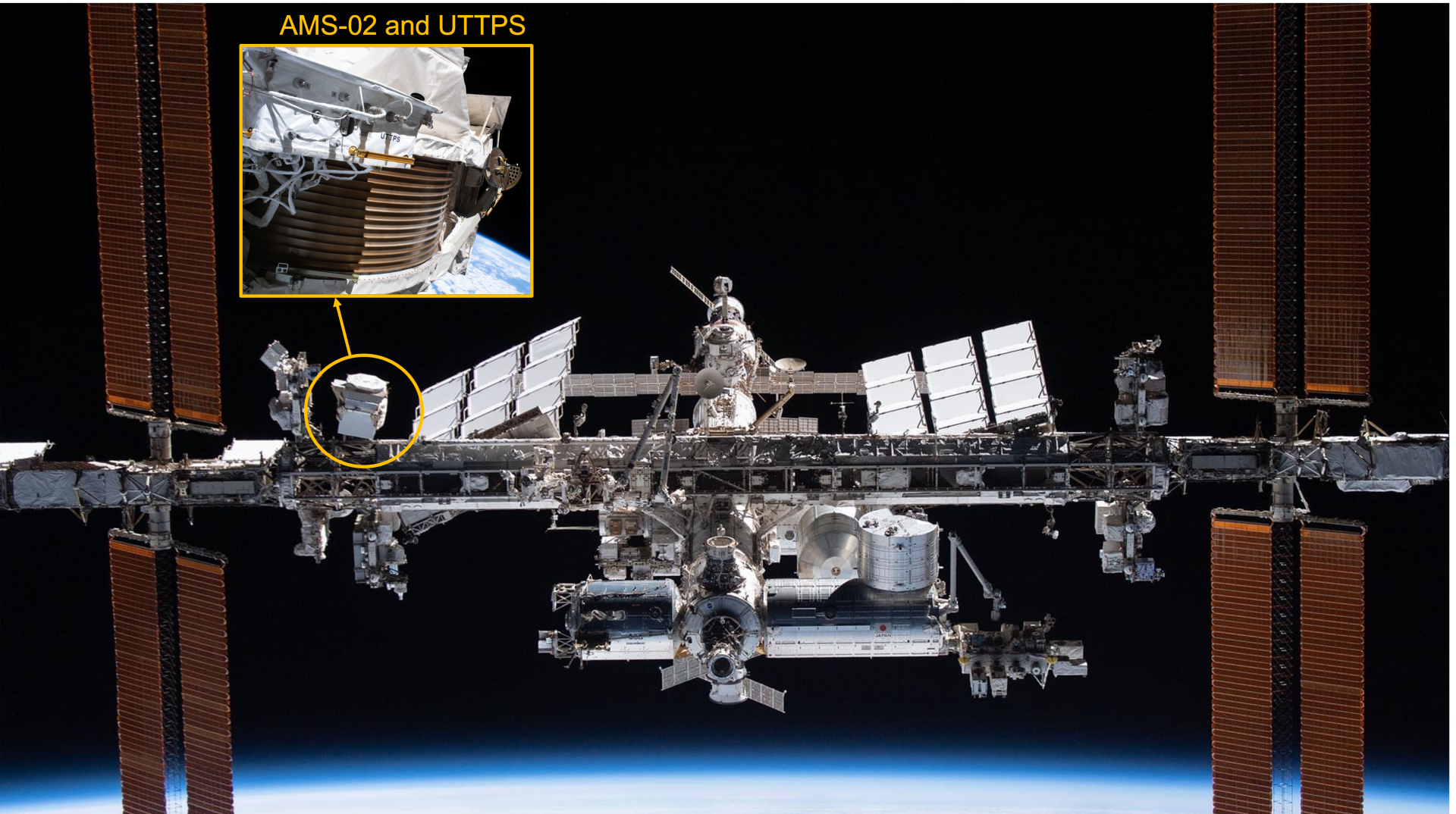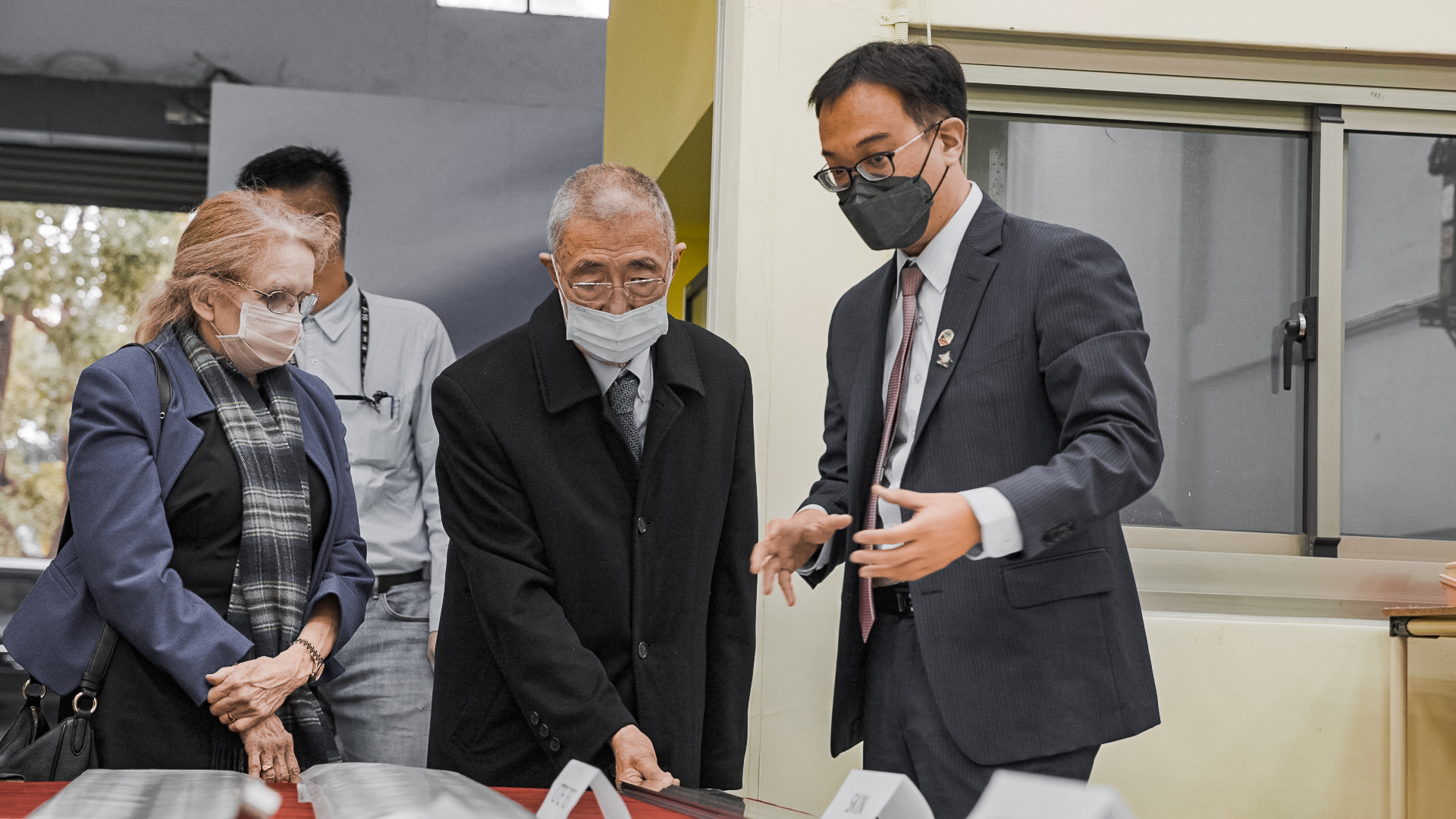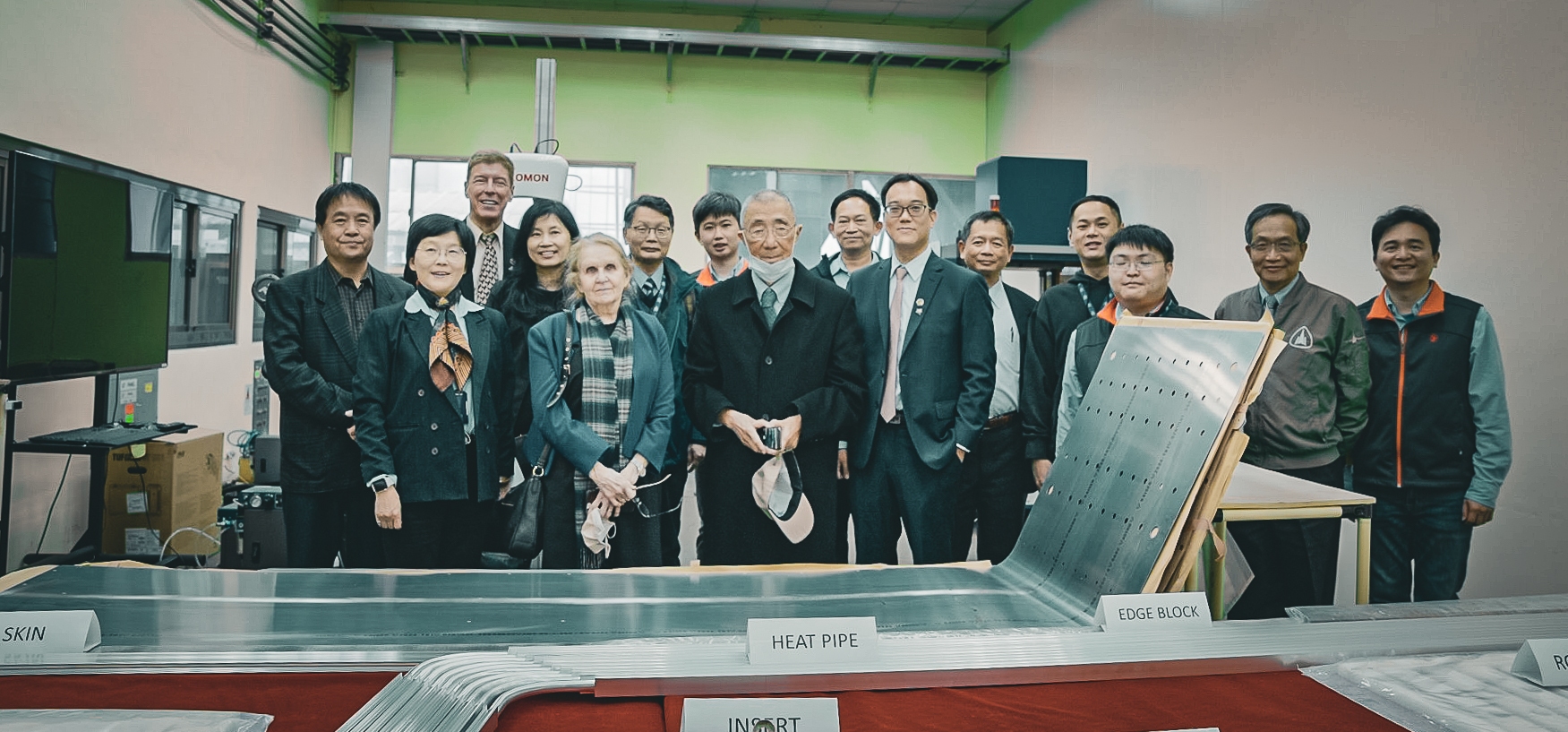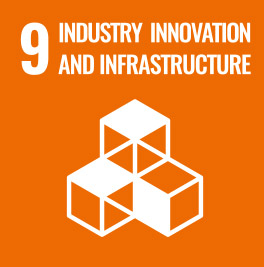SDG9
NASA Approves Latest AMS Experiment Upgrade Program Taiwanese Team is a Key Contributor Behind the Scenes
The NASA AMS experiment, in which a team from NCKU, Academia Sinica, National Chung-Shan Institute of Science and Technology (NCSIST) and The Aerospace Industrial Development Corporation (AIDC) participated, used the latest research made in the past 11 years to show that the energy distribution of electrons and protons in a complete solar cycle varies significantly with time. "This is the first time that human beings have precisely measured the flux of different electric particles in the cosmic rays during a whole solar cycle. And the results show a trend that cannot be explained by existing theories and provide a key data base for the study of the space environment in the solar system." said Yuan-Hann Chang, a special researcher at the Institute of Physics, Academia Sinica, Taiwan. This unexpected result was published in Physical Review Letters, where it was specifically recommended by the editors and selected for special news publication, demonstrating the importance of the study.
The Alpha Magnetic Spectrometer (AMS) detector is an energetic particle detector set up on the International Space Station (Figure 1), whose main mission is to precisely study the properties of cosmic rays and to understand the secrets of the universe's creation. The AMS experiment is a large-scale international collaborative experiment led by Nobel Laureate Samuel C. C. Ting, with the participation of the United States, Germany, France, Italy, China, and Taiwan, among which the Taiwan team includes Academia Sinica, NCKU, Academia Sinica, and AIDC.
Yi Yang, a professor in the Department of Physics at NCKU, explained that in this era of exploding space development, whether in GPS navigation, low orbit communication, etc., all of them are closely related to our daily life, so when designing instruments for space and planning future human exploration in space, we must understand the impact of cosmic radiation on these instruments and our bodies. Among them, one of the most important sources of cosmic radiation is the high-energy particles generated by solar storms.
The latest results from the AMS experiment using the last 11 years (i.e. a full solar cycle) show that the energy divisions of electrons and protons are significantly different over time.In addition to the different trends in the energy increase and decrease of electrons and protons in different years (e.g., in Figure 2, left, the energy of electrons and protons decreases with time in 2011-2014, but the energy of electrons and protons increases with time from 2015, and then decreases linearly again in 2021), there are also significant differences in the short time cycle (e.g., in Figure 2, right, the electrons have significant cycles at day 9, day 13.5 , and day 27, but the protons do not).
To accurately distinguish negatively charged protons from the large number of positively charged protons (the vast majority of cosmic rays), it is necessary to rely on the magnets in the AMS detector as well as the precision track detector. The AMS-02 UTTPS upgrade project, in which Academia Sinica, NCKU, NCSIST and AIDC are participating from 2017 to 2020, is to ensure that the precision track detector can continue to operate until the end of the AMS mission. The UTTPS electronics system developed by Academia Sinica and NCSIST, and the UTTPS heat sink jointly developed and manufactured by NCKU and AIDC, are the key parts of the entire AMS-02 UTTPS program, and the results of the Taiwan team have been highly recognized by Academician Samuel C. C. Ting and the National Aeronautics and Space Administration (NASA).
To further understand the properties of cosmic rays, the AMS experiment needs to collect more data before the end of the mission of the International Space Station. So in 2022, Academician Samuel C. C. Ting decided to upgrade the AMS detector again. This upgrade includes the addition of a precision tracker layer (Tracker Layer-0) with an area of more than 2.6 m² at the top of the AMS detector. In addition, after 11 years of operation, the radiator board on the Power Distribution System (PDS) has aged and deteriorated, so it also needs to be repaired to ensure the AMS detector can continue to operate. Therefore, the Taiwan team has once again taken up the responsibility to collaborate with the Academia Sinica and the NCSIST on the circuitry of Tracker Layer-0 and the design and production of the electronics system, as well as with the team from NCKU and AIDC on the development and production of the PDS Radiator.
Academician Ding and Mr. Ken Bollweg, Director of NASA's AMS-02 Program Office, made a special visit to Taiwan at the end of 2022 to understand the progress of the upgrade project. They not only visited the NCSIST to understand the progress of the electronics system, but also visited the Taichung plant of AIDC, and Professor Yi Yang of the Department of Physics, NCKU, who is in charge of the PDS Radiator project, explained the current progress to Academician Ding (Figure 3). (Figure 3). The NCKU and AIDC teams (Figure 4) are responsible for the design, simulation, and fabrication of this project, and are working closely with NASA engineers to ensure that the radiator panels can meet the rigors of the space environment.
On March 21-23, 2023, the Preliminary Design Review (PDR) for the AMS-02 upgrade program was held at the Jensen Space Center in Houston, U.S.A. The NCKU and AIDC team were invited to Houston to participate in the meeting and report the current progress to the NASA review committee. During the meeting, Prof. Yi Yang from NCKU reported on the progress of the PDS radiator and Team Leader Fu-Yong Xie from AIDC reported on the production progress, while representatives from NCSISTand Academia Sinica, Fu-Guo Yang, reported on the progress of the electronics system online. The AMS team's report at the initial design review meeting far exceeded the performance of a typical space mission, so the AMS-02 upgrade plan was officially approved at the NASA meeting on March 31 2023, confirming that the mission can proceed until liftoff and installation on the AMS probe on the International Space Station, which is expected to be completed and lifted off by the end of 2025.
"This is a very challenging mission, not only to develop something we have never done before, but also to meet various difficult conditions and to respond to changes in the mission at any time, so we must combine the resources and capabilities of all parties to accomplish this together. This is not only another joint mission between NCKU and AIDC, but also a breakthrough in the development of space technology for the entire Taiwan team," said Prof. Yi Yang.
See more
Temporal Structures in Electron Spectra and Charge Sign Effects in Galactic Cosmic Rays. M. Aguilar et al. (AMS Collaboration) Phys. Rev. Lett. 130, 161001 – Published 17 April 2023
https://journals.aps.org/prl/abstract/10.1103/PhysRevLett.130.161001
The Alpha Magnetic Spectrometer (AMS) detector is an energetic particle detector set up on the International Space Station (Figure 1), whose main mission is to precisely study the properties of cosmic rays and to understand the secrets of the universe's creation. The AMS experiment is a large-scale international collaborative experiment led by Nobel Laureate Samuel C. C. Ting, with the participation of the United States, Germany, France, Italy, China, and Taiwan, among which the Taiwan team includes Academia Sinica, NCKU, Academia Sinica, and AIDC.
Yi Yang, a professor in the Department of Physics at NCKU, explained that in this era of exploding space development, whether in GPS navigation, low orbit communication, etc., all of them are closely related to our daily life, so when designing instruments for space and planning future human exploration in space, we must understand the impact of cosmic radiation on these instruments and our bodies. Among them, one of the most important sources of cosmic radiation is the high-energy particles generated by solar storms.
The latest results from the AMS experiment using the last 11 years (i.e. a full solar cycle) show that the energy divisions of electrons and protons are significantly different over time.In addition to the different trends in the energy increase and decrease of electrons and protons in different years (e.g., in Figure 2, left, the energy of electrons and protons decreases with time in 2011-2014, but the energy of electrons and protons increases with time from 2015, and then decreases linearly again in 2021), there are also significant differences in the short time cycle (e.g., in Figure 2, right, the electrons have significant cycles at day 9, day 13.5 , and day 27, but the protons do not).
To accurately distinguish negatively charged protons from the large number of positively charged protons (the vast majority of cosmic rays), it is necessary to rely on the magnets in the AMS detector as well as the precision track detector. The AMS-02 UTTPS upgrade project, in which Academia Sinica, NCKU, NCSIST and AIDC are participating from 2017 to 2020, is to ensure that the precision track detector can continue to operate until the end of the AMS mission. The UTTPS electronics system developed by Academia Sinica and NCSIST, and the UTTPS heat sink jointly developed and manufactured by NCKU and AIDC, are the key parts of the entire AMS-02 UTTPS program, and the results of the Taiwan team have been highly recognized by Academician Samuel C. C. Ting and the National Aeronautics and Space Administration (NASA).
To further understand the properties of cosmic rays, the AMS experiment needs to collect more data before the end of the mission of the International Space Station. So in 2022, Academician Samuel C. C. Ting decided to upgrade the AMS detector again. This upgrade includes the addition of a precision tracker layer (Tracker Layer-0) with an area of more than 2.6 m² at the top of the AMS detector. In addition, after 11 years of operation, the radiator board on the Power Distribution System (PDS) has aged and deteriorated, so it also needs to be repaired to ensure the AMS detector can continue to operate. Therefore, the Taiwan team has once again taken up the responsibility to collaborate with the Academia Sinica and the NCSIST on the circuitry of Tracker Layer-0 and the design and production of the electronics system, as well as with the team from NCKU and AIDC on the development and production of the PDS Radiator.
Academician Ding and Mr. Ken Bollweg, Director of NASA's AMS-02 Program Office, made a special visit to Taiwan at the end of 2022 to understand the progress of the upgrade project. They not only visited the NCSIST to understand the progress of the electronics system, but also visited the Taichung plant of AIDC, and Professor Yi Yang of the Department of Physics, NCKU, who is in charge of the PDS Radiator project, explained the current progress to Academician Ding (Figure 3). (Figure 3). The NCKU and AIDC teams (Figure 4) are responsible for the design, simulation, and fabrication of this project, and are working closely with NASA engineers to ensure that the radiator panels can meet the rigors of the space environment.
On March 21-23, 2023, the Preliminary Design Review (PDR) for the AMS-02 upgrade program was held at the Jensen Space Center in Houston, U.S.A. The NCKU and AIDC team were invited to Houston to participate in the meeting and report the current progress to the NASA review committee. During the meeting, Prof. Yi Yang from NCKU reported on the progress of the PDS radiator and Team Leader Fu-Yong Xie from AIDC reported on the production progress, while representatives from NCSISTand Academia Sinica, Fu-Guo Yang, reported on the progress of the electronics system online. The AMS team's report at the initial design review meeting far exceeded the performance of a typical space mission, so the AMS-02 upgrade plan was officially approved at the NASA meeting on March 31 2023, confirming that the mission can proceed until liftoff and installation on the AMS probe on the International Space Station, which is expected to be completed and lifted off by the end of 2025.
"This is a very challenging mission, not only to develop something we have never done before, but also to meet various difficult conditions and to respond to changes in the mission at any time, so we must combine the resources and capabilities of all parties to accomplish this together. This is not only another joint mission between NCKU and AIDC, but also a breakthrough in the development of space technology for the entire Taiwan team," said Prof. Yi Yang.
See more
Temporal Structures in Electron Spectra and Charge Sign Effects in Galactic Cosmic Rays. M. Aguilar et al. (AMS Collaboration) Phys. Rev. Lett. 130, 161001 – Published 17 April 2023
https://journals.aps.org/prl/abstract/10.1103/PhysRevLett.130.161001

Figure 1: AMS experiment installed on the International Space Station

Fig. 2: Changes in the energy division of electrons and protons (right) with different years and (left) with different days

Figure 3: Professor Yi Yang (1st from right) of the Department of Physics, NCKU explains the progress of AMS-02 PDS Radiator to Academician Samuel C. C. Ting (middle)

Figure 4: NCKU and AIDC R&D team with Academician Samuel C. C. Ting (middle) and his wife at AIDC

SDG9The 33rd Satellite Design Contest in Japan, faculty and students from NCKU won multiple awards with outstanding achievements
View more
SDG9"2024 Digital Learning Forum" Concludes Successfully: Exploring Educational Innovation Driven by Generative AI
View more



















